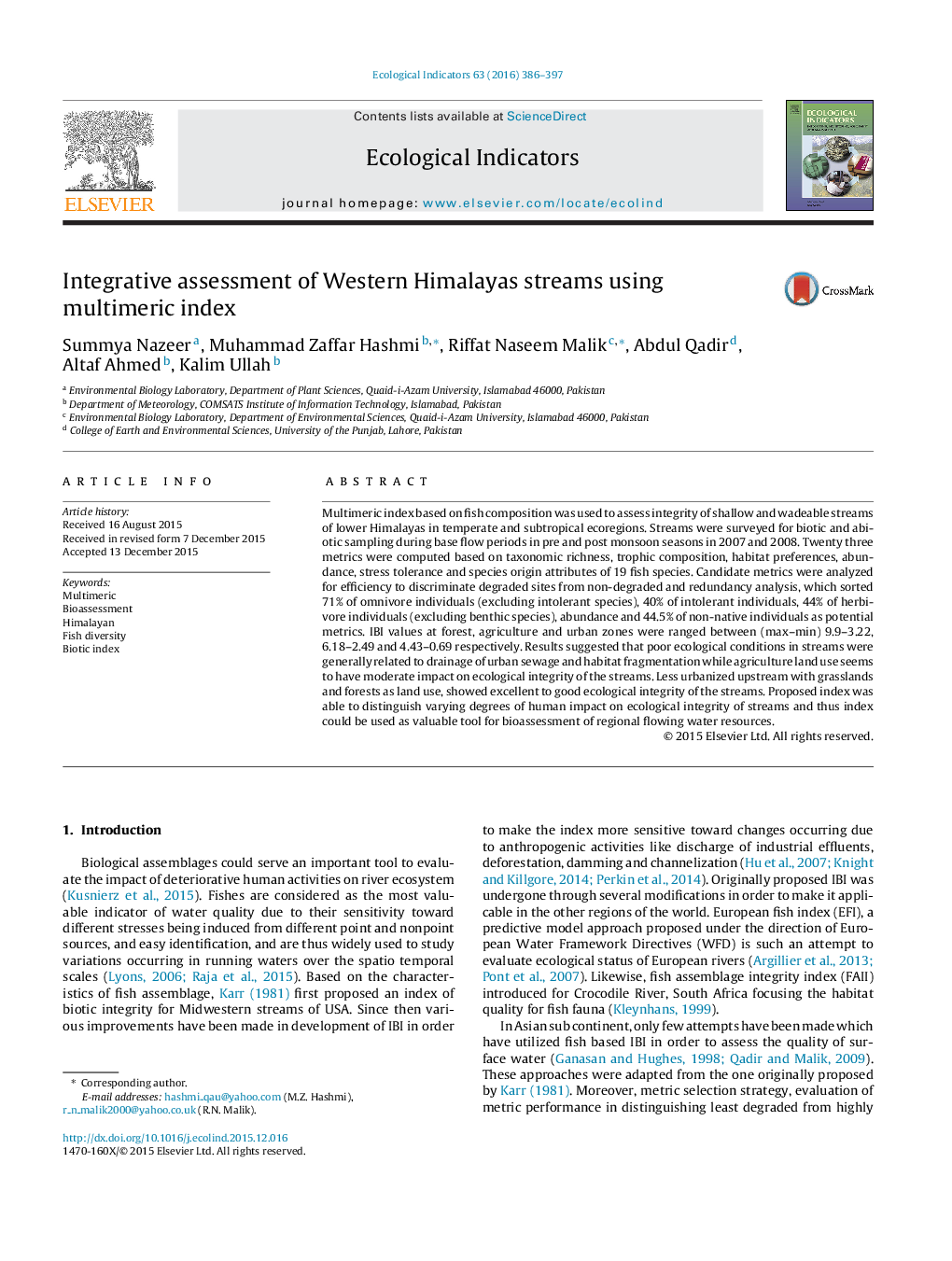| Article ID | Journal | Published Year | Pages | File Type |
|---|---|---|---|---|
| 6293904 | Ecological Indicators | 2016 | 12 Pages |
Abstract
Multimeric index based on fish composition was used to assess integrity of shallow and wadeable streams of lower Himalayas in temperate and subtropical ecoregions. Streams were surveyed for biotic and abiotic sampling during base flow periods in pre and post monsoon seasons in 2007 and 2008. Twenty three metrics were computed based on taxonomic richness, trophic composition, habitat preferences, abundance, stress tolerance and species origin attributes of 19 fish species. Candidate metrics were analyzed for efficiency to discriminate degraded sites from non-degraded and redundancy analysis, which sorted 71% of omnivore individuals (excluding intolerant species), 40% of intolerant individuals, 44% of herbivore individuals (excluding benthic species), abundance and 44.5% of non-native individuals as potential metrics. IBI values at forest, agriculture and urban zones were ranged between (max-min) 9.9-3.22, 6.18-2.49 and 4.43-0.69 respectively. Results suggested that poor ecological conditions in streams were generally related to drainage of urban sewage and habitat fragmentation while agriculture land use seems to have moderate impact on ecological integrity of the streams. Less urbanized upstream with grasslands and forests as land use, showed excellent to good ecological integrity of the streams. Proposed index was able to distinguish varying degrees of human impact on ecological integrity of streams and thus index could be used as valuable tool for bioassessment of regional flowing water resources.
Related Topics
Life Sciences
Agricultural and Biological Sciences
Ecology, Evolution, Behavior and Systematics
Authors
Summya Nazeer, Muhammad Zaffar Hashmi, Riffat Naseem Malik, Abdul Qadir, Altaf Ahmad, Kalim Ullah,
